In The Lab
The journey of a lab-grown diamond begins in a diamond growth facility, where scientists use cutting-edge technology to create the ideal conditions for diamond crystals to form. There are several methods for growing lab-grown diamonds, the most common of which is chemical vapor deposition (CVD) and High-Pressure High-Temperature (HPHT).
1: CVD Process
In the CVD process, a small seed diamond is placed in a chamber, where a mixture of gasses, such as methane and hydrogen, are introduced. The gasses are then heated to a high temperature and broken down by a plasma, creating a carbon-rich environment that causes the carbon atoms to adhere to the seed diamond, resulting in the growth of a new diamond.
2: HPHT Process
In the HPHT process, carbon under high pressure and high temperature are used to form a diamond crystal. The pressure and temperature are maintained in a special press, a seed diamond is placed in the press, and a mixture of gasses, such as methane, is introduced. The carbon atoms in the gasses will attach to the seed diamond, forming a diamond crystal.
Sorting
After lab-grown diamonds are grown, cut, and polished, they are typically sorted based on their physical characteristics, such as their color, clarity, cut, and carat weight.
The process of sorting lab-grown diamonds begins with an initial inspection, during which the diamonds are visually inspected to identify any obvious imperfections. After the initial inspection, the diamonds are graded by a gemologist, who uses a set of strict guidelines to determine the diamond’s color, clarity, cut, and carat weight.
Color sorting is the process of grouping diamonds based on their color. This can be done using a set of master stones, which are known to have a specific color, as a reference. The lab-grown diamonds are then compared to the master stones and sorted into different color groups based on their similarity.
Clarity sorting is the process of grouping diamonds based on their clarity. The diamonds are inspected under a microscope to identify any inclusions or blemishes on the diamond. The diamonds are then sorted into different clarity groups based on the number, size, and position of the inclusions or blemishes.
Cut sorting is the process of grouping diamonds based on the quality of their cut. This can be done by measuring the symmetry, brightness, fire, and other optical characteristics of the diamond. Diamonds that have been well-cut will reflect light in a way that creates a sparkling appearance. The diamonds are then sorted into different cut groups based on the quality of their cut.
Carat weight sorting is the process of grouping diamonds based on their weight. Lab-grown diamonds are usually sorted into different carat weight groups, usually in increments of 0.01 carats.
After the diamonds have been sorted, they are packaged and prepared for sale. The sorting process ensures that the lab-grown diamonds are of consistent quality and that customers can easily find a diamond that meets their specific needs and preferences.
It’s important to note that Lab-grown diamonds can be sorted using more advanced technology as well. Some companies use laser inscription to sort the lab-grown diamond based on their characteristics. This allows a quick and accurate way of sorting and identifying lab-grown diamonds.
Polishing
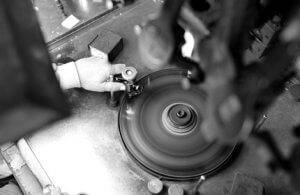
After lab-grown diamonds are grown and cut, they must be polished to bring out their natural beauty. Diamond polishing is the process of smoothing the surface of the diamond and creating a shiny finish. The process of polishing lab-grown diamonds is similar to the process used to polish natural diamonds.
The first step in polishing a lab-grown diamond is to use a series of coarse diamond abrasives to remove any surface imperfections and to bring the diamond closer to its final shape. These abrasives are typically in the form of metal-bonded diamond powder or diamond-coated wheels, and are used in a process called “lapping.”
The next step is to use a series of finer diamond abrasives to further smooth the surface of the diamond and to create a more polished finish. This step is called “bruting,” and typically uses diamond abrasives with a smaller grit size.
Once the diamond has been roughly shaped and polished, it is cleaned and inspected. Any remaining surface imperfections are then removed using a process called “blocking,” which uses a diamond-coated wheel to remove small amounts of material from the diamond’s surface.
The final step is to create a high-gloss finish on the diamond by using a series of increasingly fine diamond abrasives. This step is called “polishing,” and it creates the characteristic shine that is associated with diamonds.
After the polishing process is complete, the lab-grown diamond is graded by a gemologist to determine its color, clarity, cut, and carat weight. Once graded, the diamond is ready to be sold to a diamond retailer or jeweler, who will then make it available to consumers.
It’s worth noting that while the lab-grown diamond polishing process is similar to natural diamonds, some companies are using more advanced technology to polish their lab-grown diamonds to make them more precise, consistent, and of higher quality.
Assorting and Grading Lab-grown diamond
Lab-grown diamonds are sorted and graded in the same way as mined diamonds. They are evaluated based on the Four Cs: carat weight, cut, color, and clarity.
Carat weight is the unit of measurement used to express a diamond’s weight. It is important to note that, even though weight is not the only indication of quality, it is a big factor in evaluating the diamond’s price.
The cut is the shape and symmetry of a diamond, which affects its brightness, fire, and sparkle. The most common cuts are round princess, oval, pear, cushion, and marquise.
Color is a measure of how colorless a diamond is. The Gemological Institute of America (GIA) has established a color scale that ranges from D (colorless) to Z (light yellow or brown).
Clarity is the measure of the presence of inclusions and blemishes on a diamond. The GIA established the clarity scale that ranges from Flawless (no inclusions or blemishes visible under 10x magnification) to Included (inclusions visible to the unaided eye).
After sorting and grading, lab-grown diamonds are also certified by independent organizations such as GIA, International Gemological Institute (IGI), and others, to ensure their quality and authenticity. The certification also helps to guarantee that the diamond is ethically sourced, as many lab-grown diamond companies have committed to environmentally and socially conscious production.
Certification
After the lab-grown diamond is graded, it goes through a certification process. Most lab-grown diamonds are certified by independent gemological laboratories such as the International Gemological Institute (IGI), the Gemological Institute of America (GIA), or the European Gemological Laboratory (EGL). These organizations use strict guidelines to certify the diamond’s authenticity, quality, and grading. The certification process usually involves an evaluation of the diamond’s physical characteristics, such as its carat weight, color, clarity, and cut, as well as a detailed analysis of its chemical composition using advanced equipment such as spectroscopy.
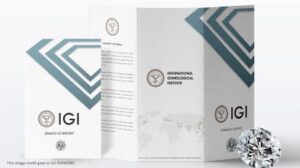
On the Certification Completion
Once certified, the lab-grown diamond is ready for sale to the public. Lab-grown diamonds can be found in many different retail settings, such as online lab-grown diamond jewelry retailers, brick-and-mortar jewelry stores, and specialty lab-grown diamond retailers. The prices of lab-grown diamonds tend to be lower than natural diamonds of the same quality, which makes them an attractive alternative for consumers who are looking for a diamond but are concerned about the environmental and ethical issues associated with mining natural diamonds.
To the market
The journey of lab-grown diamonds does not end with the sale to consumers. Lab-grown diamonds can be used for a variety of applications beyond jewelry, such as in the field of quantum computing and electronics. They are expected to have a growing impact in many fields in the future.
It’s worth mentioning that in recent years, lab-grown diamonds have become more prevalent in the market. They have become increasingly popular among consumers who are looking for a more sustainable and ethical option. Lab-grown diamonds are created in a controlled environment and do not involve the environmental and social issues associated with mining natural diamonds. Additionally, the lab-grown diamond market has grown considerably in recent years due to the advancements in technology, making them more accessible and cost-effective.
Another benefit of lab-grown diamonds is that they often have a higher degree of consistency in terms of color, clarity, and other physical characteristics, which is not always the case with natural diamonds. This makes it easier for jewelers and diamond retailers to provide their customers with diamonds that have consistent quality.
However, not all lab-grown diamonds are created equal. While many are made in a laboratory, there are also synthetic diamonds on the market that are made by recreating the high-pressure and high-temperature conditions that natural diamonds form under and it may be difficult for customers to tell the difference between synthetic and lab-grown diamonds. It is important for the customers to verify if the diamond is lab-grown or synthetic before making a purchase.
Lab-grown diamond manufacturers offer a sustainable and ethical alternative to natural diamonds. The technology to produce lab-grown diamonds has grown significantly in recent years, making them more accessible and cost-effective. They are also becoming increasingly popular among consumers who are looking for a diamond but are concerned about the environmental and ethical issues associated with mining natural diamonds. However, there are also synthetic diamonds in the market which customers need to be aware of. The best way to ensure that the diamond is lab-grown is to verify the authenticity and quality through a certification process.
In Summary
The journey of a lab-grown diamond begins in a diamond growth facility, where scientists use cutting-edge technology to create the ideal conditions for diamond crystals to form. It then goes through the process of cutting and polishing and grading. After that, it goes through a certification process to ensure its authenticity, quality, and grading. Finally, it is made available to consumers at a lower price than natural diamonds. And it may have multiple other applications in various fields other than just jewelry.
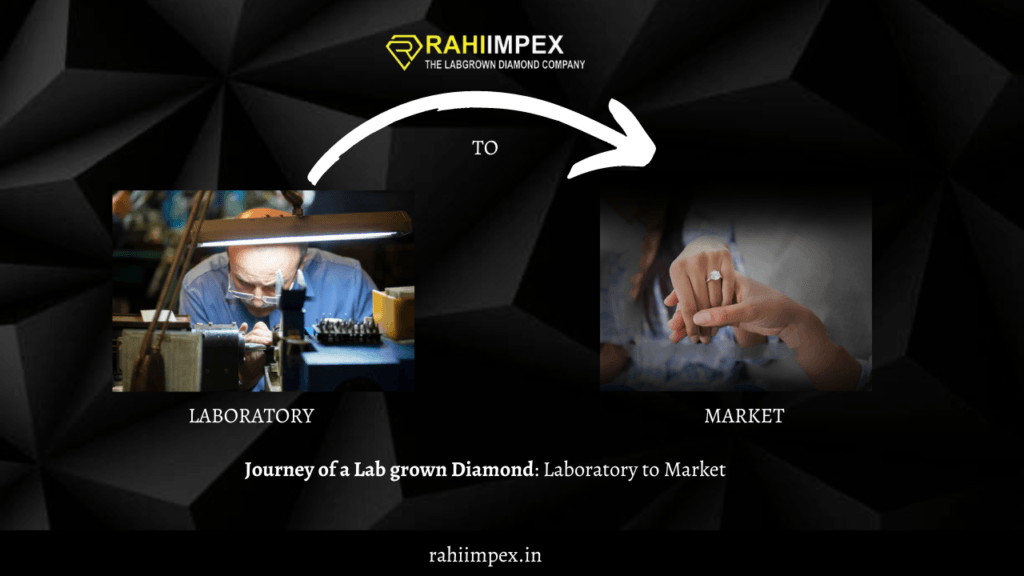
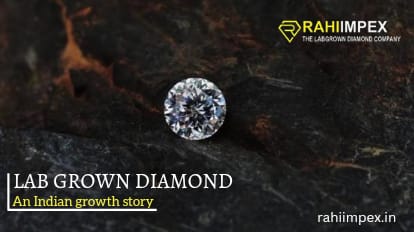
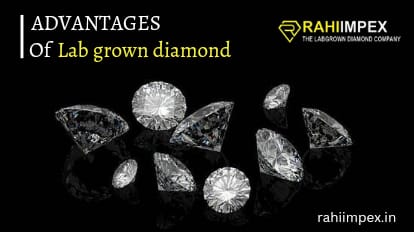

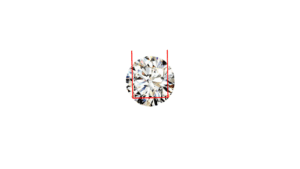
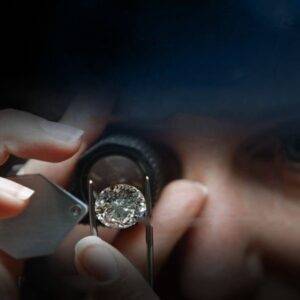
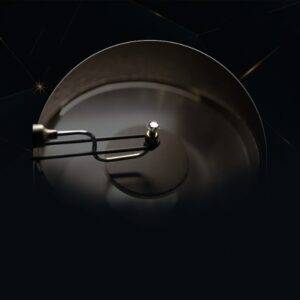
Your point of view caught my eye and was very interesting. Thanks. I have a question for you.
Thanks for sharing. I read many of your blog posts, cool, your blog is very good.
https://semaglupharm.com/# SemagluPharm
Crestor Pharm: rosuvastatin calcium 20 mg tablet – Crestor Pharm
http://semaglupharm.com/# SemagluPharm
atorvastatin benefits: LipiPharm – lipitor nightmares
how to take semaglutide SemagluPharm FDA-approved Rybelsus alternative
https://semaglupharm.com/# Semaglu Pharm
Rybelsus side effects and dosage: can semaglutide cause headaches – Where to buy Semaglutide legally
SemagluPharm: rybelsus anesthesia – Where to buy Semaglutide legally
https://prednipharm.shop/# Predni Pharm
https://semaglupharm.shop/# FDA-approved Rybelsus alternative
atorvastatin dental side effects Generic Lipitor fast delivery atorvastatin calcium para que sirve
atorvastatin chemical structure: Affordable Lipitor alternatives USA – Lipi Pharm
No RX Lipitor online: Lipi Pharm – lipitor rival crossword clue
https://semaglupharm.shop/# SemagluPharm
CrestorPharm 5 mg crestor can i stop taking crestor
amlodipine/atorvastatin: LipiPharm – USA-based pharmacy Lipitor delivery
buy crestor from canada: crestor over the counter – how long does it take for crestor to work
https://prednipharm.shop/# PredniPharm
https://semaglupharm.shop/# SemagluPharm
CrestorPharm No doctor visit required statins Crestor Pharm
Lipi Pharm: LipiPharm – Lipi Pharm
CrestorPharm: Crestor Pharm – rosuvastatin and erectile dysfunction
https://semaglupharm.com/# Semaglu Pharm
LipiPharm [url=http://lipipharm.com/#]Lipi Pharm[/url] Online statin drugs no doctor visit
rybelsus 3 mg weight loss: rybelsus alternatives – Affordable Rybelsus price
https://semaglupharm.shop/# Order Rybelsus discreetly
is there a lawsuit against lipitor: LipiPharm – can lipitor cause back pain
https://semaglupharm.com/# another name for rybelsus
Generic Crestor for high cholesterol CrestorPharm Safe online pharmacy for Crestor
PredniPharm: prednisone online for sale – prednisone buy without prescription
https://semaglupharm.com/# Semaglu Pharm
tirzepatide vs semaglutide dosage for weight loss: semaglutide diarrhea after eating – Semaglu Pharm
Order Rybelsus discreetly Rybelsus side effects and dosage Rybelsus for blood sugar control
Affordable Rybelsus price: Order Rybelsus discreetly – Semaglu Pharm
https://semaglupharm.shop/# semaglutide 5mg/ml dosage
CrestorPharm: Crestor home delivery USA – can i just stop taking crestor
https://semaglupharm.com/# Semaglu Pharm
Semaglu Pharm can you take phentermine and semaglutide together SemagluPharm
https://semaglupharm.shop/# do semaglutide tablets work
Semaglu Pharm: Semaglu Pharm – Semaglu Pharm
40 mg prednisone pill: where to buy prednisone uk – prednisone 12 tablets price
CrestorPharm Crestor Pharm CrestorPharm
https://semaglupharm.com/# how to give semaglutide injection in thigh
CrestorPharm: can you cut rosuvastatin 40 mg in half – Affordable cholesterol-lowering pills
SemagluPharm: does rybelsus work – sulfur burps semaglutide
Buy cholesterol medicine online cheap Crestor Pharm Crestor mail order USA
https://semaglupharm.com/# SemagluPharm
SemagluPharm: how to pronounce semaglutide – can rybelsus cause pancreatitis
https://lipipharm.shop/# LipiPharm
prednisone pak: prednisone 300mg – generic prednisone tablets
http://semaglupharm.com/# FDA-approved Rybelsus alternative
Rybelsus online pharmacy reviews Where to buy Semaglutide legally SemagluPharm
prednisone 10 mg price: Predni Pharm – PredniPharm
PredniPharm: PredniPharm – PredniPharm
https://semaglupharm.com/# can rybelsus be used for weight loss
Discreet shipping for Lipitor Generic Lipitor fast delivery lipitor 20mg
ordering drugs from canada: Canada Pharm Global – best rated canadian pharmacy
https://indiapharmglobal.com/# best india pharmacy
Meds From Mexico: buying from online mexican pharmacy – medication from mexico pharmacy
https://medsfrommexico.com/# mexican online pharmacies prescription drugs
indian pharmacy India Pharm Global India Pharm Global
Meds From Mexico: mexican drugstore online – buying prescription drugs in mexico online
India Pharm Global: pharmacy website india – India Pharm Global
http://canadapharmglobal.com/# canadian compounding pharmacy
India Pharm Global India Pharm Global india pharmacy
http://medsfrommexico.com/# Meds From Mexico
india online pharmacy: India Pharm Global – indian pharmacy
adderall canadian pharmacy: canada drugs – best online canadian pharmacy
http://canadapharmglobal.com/# safe online pharmacies in canada
Meds From Mexico Meds From Mexico Meds From Mexico
India Pharm Global: online pharmacy india – India Pharm Global
indian pharmacy paypal: India Pharm Global – best online pharmacy india
https://medsfrommexico.com/# Meds From Mexico
http://canadapharmglobal.com/# canadian pharmacy prices
canada drug pharmacy canadian pharmacy meds canadian pharmacy 24h com safe
India Pharm Global: India Pharm Global – india pharmacy mail order
https://medsfrommexico.com/# best online pharmacies in mexico
India Pharm Global: India Pharm Global – top 10 pharmacies in india
purple pharmacy mexico price list: mexican online pharmacies prescription drugs – mexico pharmacies prescription drugs
best online pharmacies in mexico Meds From Mexico Meds From Mexico
https://indiapharmglobal.shop/# top 10 online pharmacy in india
India Pharm Global: India Pharm Global – п»їlegitimate online pharmacies india
http://medsfrommexico.com/# Meds From Mexico
Thank you for your sharing. I am worried that I lack creative ideas. It is your article that makes me full of hope. Thank you. But, I have a question, can you help me?
http://indiapharmglobal.com/# top 10 pharmacies in india
India Pharm Global: India Pharm Global – India Pharm Global
India Pharm Global indian pharmacy paypal Online medicine home delivery
canadian pharmacy sarasota: canadian online pharmacy reviews – vipps canadian pharmacy
http://medsfrommexico.com/# medication from mexico pharmacy
mexican rx online: Meds From Mexico – Meds From Mexico
India Pharm Global india online pharmacy top 10 pharmacies in india
canadian drugstore online: best rated canadian pharmacy – canadian medications
https://canadapharmglobal.shop/# canadian pharmacy price checker
http://indiapharmglobal.com/# India Pharm Global
mexico drug stores pharmacies: medicine in mexico pharmacies – Meds From Mexico
Meds From Mexico buying from online mexican pharmacy mexican online pharmacies prescription drugs
world pharmacy india: top online pharmacy india – indian pharmacy online
https://raskapotek.shop/# apotek åpningstider påske
brodder apotek nesesuger apotek Rask Apotek
sporanox compresse a cosa serve: EFarmaciaIt – EFarmaciaIt
ilningar engelska: apotek hostmedicin – pharmacy sweden
http://raskapotek.com/# flytende magnesium apotek
http://raskapotek.com/# Rask Apotek
Rask Apotek: Rask Apotek – Гёrelys apotek
apotek tilbud Rask Apotek Rask Apotek
http://svenskapharma.com/# Svenska Pharma
vГҐrtor i ansiktet bilder: Svenska Pharma – apotek ansiktsmask
EFarmaciaIt: sporanox senza ricetta – EFarmaciaIt
gfarmacia Papa Farma wegovy espaГ±a
https://efarmaciait.com/# EFarmaciaIt
https://svenskapharma.com/# apotek pcr test
fucicort crema prezzo amazon: EFarmaciaIt – farmacia marina di campo
Papa Farma: cialis 10 mg precio farmacia – cuando hace efecto movicol
spray nasale in gravidanza forum EFarmaciaIt expose 100 mg prezzo con ricetta
http://raskapotek.com/# vaksine influensa apotek
svenska apotek: pcr apotek – bГ¤st glidmedel
fluconazolo bustine my farmacia online EFarmaciaIt
http://svenskapharma.com/# g punkten män
https://papafarma.com/# direct farmacias
kaliumjodid apotek: ГёyedrГҐper apotek – prikkperikum apotek
Rask Apotek: Rask Apotek – Rask Apotek
nageltrГҐng apotek Svenska Pharma se recept apotek
http://raskapotek.com/# fullmakt skjema apotek
Papa Farma: farmacia a domicilio tenerife – Papa Farma
wegovy espaГ±a: farmacias 24 horas madrid – Papa Farma
https://svenskapharma.com/# näringsdryck recept apotek
Papa Farma Papa Farma Papa Farma
http://papafarma.com/# Papa Farma
kobberspiral apotek: a-vitamin syre krem apotek – tГҐ separator apotek
EFarmaciaIt: farmaco lucen – app postepay non funziona di notte
http://efarmaciait.com/# EFarmaciaIt
Svenska Pharma ringorm apotek Svenska Pharma
precio del movicol: Papa Farma – compra online farmacia
EFarmaciaIt: farmacia online italiana – EFarmaciaIt
http://efarmaciait.com/# crema cicatrizzante parti intime
EFarmaciaIt EFarmaciaIt quando prendere cistalgan
https://papafarma.com/# Papa Farma
influensavaksine apotek pris: norsk apotek – ГҐpen apotek
samyr farmaco: gentalyn beta equivalente senza ricetta – EFarmaciaIt
web care EFarmaciaIt EFarmaciaIt
kan apotek sette b12 sprГёyte: Rask Apotek – magnesiumolje apotek
https://svenskapharma.shop/# kan man hämta recept på alla apotek
Rask Apotek: Rask Apotek – Rask Apotek
Svenska Pharma ansiktsmask tyg apotek Svenska Pharma
https://raskapotek.shop/# Rask Apotek
https://raskapotek.com/# svovel såpe apotek
Rask Apotek: Rask Apotek – Rask Apotek
epiduo gel precio farmacia Papa Farma casenlax o movicol
Papa Farma: oral b io cabezales – Papa Farma
https://papafarma.shop/# Papa Farma
https://pharmaconfiance.shop/# commander du cialis en toute sécurité
Medicijn Punt pharmacy nederlands mijn medicijn bestellen
http://pharmaconfiance.com/# croquettes chat anti allergie homme
Pharma Jetzt: online apotheken – shops apotheke
Medicijn Punt: de apotheek – medicatie apotheker
https://medicijnpunt.shop/# MedicijnPunt
cialis achat en ligne en france saxenda achat sans ordonnance metronidazole medicament
finpecia pharmacy2home: pharmacy to buy viagra – gold rx pharmacy
filtre vieillissant en ligne: Pharma Confiance – Pharma Confiance
https://pharmaconnectusa.com/# tesco pharmacy viagra price
https://pharmaconfiance.shop/# fiГЁvre 24h aprГЁs une chute bГ©bГ©
apohteek MedicijnPunt apotheek inloggen
tylenol 3 pharmacy: pharmacy grade nolvadex – Pharma Connect USA
Medicijn Punt: Medicijn Punt – medicijnen online
http://pharmaconnectusa.com/# Pharma Connect USA
Pharma Confiance nutrition pro en pharmacie pharmacie aux alentours de moi
MedicijnPunt: online medicijnen kopen zonder recept – betrouwbare online apotheek zonder recept
Pharma Confiance: Pharma Confiance – ghd lyon
https://pharmaconfiance.shop/# pharmacie allemagne
https://pharmaconnectusa.shop/# Pharma Connect USA
apotheke obline: luitpold-apotheke selbitz – medikamente liefern lassen
apotheke 24 stunden lieferung PharmaJetzt apotheke online kaufen
http://medicijnpunt.com/# Medicijn Punt
Pharma Confiance: pharmacie villeneuve d’ascq – metronidazole grossesse
pharmacie porte du medoc: Pharma Confiance – pharmacie garde gard
PharmaJetzt apotheken im internet medikamente auf rechnung
https://pharmaconfiance.shop/# piece auto medoc
apotheke deutschland: PharmaJetzt – Pharma Jetzt
http://pharmajetzt.com/# Pharma Jetzt
drug store pharmacy near me: Levaquin – Pharma Connect USA
Medicijn Punt MedicijnPunt Medicijn Punt
http://pharmaconfiance.com/# para santé services
Medicijn Punt: MedicijnPunt – snel medicijnen bestellen
Pharma Jetzt: PharmaJetzt – apotheken de
http://pharmaconnectusa.com/# spironolactone online pharmacy no prescription
PharmaJetzt shopaptheke shopp apotheke
apotal shop apotheke: Pharma Jetzt – sofort apotheke
https://medicijnpunt.com/# medicijnen bestellen apotheek
PharmaJetzt: online apo – internetapotheke selbitz
https://pharmaconnectusa.com/# clozapine polypharmacy
mexican pharmacy seroquel PharmaConnectUSA dostinex online pharmacy
PharmaJetzt: PharmaJetzt – online apotheke ohne versandkosten
http://pharmaconfiance.com/# Pharma Confiance
Medicijn Punt: medicijnen kopen – MedicijnPunt
Pharma Confiance Pharma Confiance Pharma Confiance
medicijnen kopen: online medicatie bestellen – MedicijnPunt
http://pharmaconfiance.com/# slinda 4 mg prix
Pharma Confiance: slinda 4 mg – Pharma Confiance
https://pharmajetzt.shop/# apotheke internet
parapharmaceutique Pharma Confiance Pharma Confiance
apotheke bestellen: Pharma Jetzt – online medicine
https://pharmajetzt.shop/# Pharma Jetzt
billig medikamente: apotheke online shop – PharmaJetzt
Medicijn Punt MedicijnPunt Medicijn Punt
https://medicijnpunt.shop/# MedicijnPunt
pioneer rx pharmacy software: PharmaConnectUSA – rite aid pharmacy viagra cost
Pharma Connect USA: buy nexium online pharmacy – tretinoin cream online pharmacy
https://medicijnpunt.shop/# pharma apotheek
Medicijn Punt online medicijnen bestellen zonder recept online apotheek nederland met recept
https://pharmaconfiance.com/# Pharma Confiance
MedicijnPunt: online apotheek – gratis verzending – Medicijn Punt
Pharma Confiance: pharmacie pas cher en ligne – quelle autoritГ© assure la protection des donnГ©es personnelles en belgique
acheter du viagra en pharmacie Pharma Confiance Pharma Confiance
http://pharmajetzt.com/# PharmaJetzt
versandapotheke: Pharma Jetzt – apotal apotheke online bestellen
medikamente gГјnstig bestellen: Pharma Jetzt – PharmaJetzt
online medicijnen bestellen apotheek dokter online medicijnen bestellen onlineapotheek
http://medicijnpunt.com/# MedicijnPunt
https://pharmaconnectusa.shop/# no prescription pharmacy valtrex
MedicijnPunt: MedicijnPunt – Medicijn Punt
Medicijn Punt: Medicijn Punt – snel medicijnen bestellen
does pharmacy sell viagra PharmaConnectUSA viagra online india pharmacy
http://pharmajetzt.com/# shop apitheke
MedicijnPunt: MedicijnPunt – medicijnen kopen zonder recept
PharmaJetzt: shopa – Pharma Jetzt
http://medicijnpunt.com/# mijn medicijn bestellen
Pharma Connect USA Pharma Connect USA PharmaConnectUSA
http://pharmaconfiance.com/# prendre monuril 2 fois
Medicijn Punt: MedicijnPunt – pil online bestellen
dokter online medicijnen bestellen: apteka internetowa nl – medicijne
https://pharmaconnectusa.com/# disulfiram online pharmacy
medicijnen bestellen apotheek MedicijnPunt Medicijn Punt
apotheek bestellen: Medicijn Punt – MedicijnPunt
Medicijn Punt: Medicijn Punt – MedicijnPunt
http://medicijnpunt.com/# de apotheek
apotheke internet Pharma Jetzt PharmaJetzt
https://medicijnpunt.shop/# Medicijn Punt
apotheek aan huis: Medicijn Punt – online apotheek – gratis verzending
Pharma Jetzt: PharmaJetzt – PharmaJetzt
http://pharmaconfiance.com/# Pharma Confiance
Pharma Jetzt apoteheke sjop apotheke
Pharma Jetzt: Pharma Jetzt – Pharma Jetzt
http://medicijnpunt.com/# internetapotheek
Medicijn Punt: medicijnen aanvragen apotheek – recepta online
Pharma Confiance Pharma Confiance pharmacie autour de moi
seriГ¶se online-apotheke rezeptfrei: PharmaJetzt – medikamente online kaufen
https://pharmaconnectusa.shop/# Pharma Connect USA
https://pharmaconnectusa.com/# Pharma Connect USA
online pharmacy ambien overnight: Pharma Connect USA – Pharma Connect USA
PharmaConnectUSA rx options pharmacy help desk PharmaConnectUSA
PharmaJetzt: luipold apotheke – medikame
https://pharmaconnectusa.shop/# Pharma Connect USA
onlineapotheek: betrouwbare online apotheek – medicatie bestellen online
apteka eindhoven: MedicijnPunt – onlineapotheek
MedicijnPunt Medicijn Punt Medicijn Punt
https://medicijnpunt.com/# Medicijn Punt
Medicijn Punt: Medicijn Punt – apotheke online
https://medicijnpunt.shop/# Medicijn Punt
versandapotheke online: Pharma Jetzt – PharmaJetzt
online apotheke auf rechnung: shop aptheke – Pharma Jetzt
PharmaJetzt schopapoteke Pharma Jetzt
MedicijnPunt: apotheek webshop – MedicijnPunt
https://pharmaconnectusa.shop/# PharmaConnectUSA
worldwide pharmacy kamagra: PharmaConnectUSA – Pharma Connect USA
http://medicijnpunt.com/# MedicijnPunt
sam’s club pharmacy propecia: Pharma Connect USA – Pharma Connect USA
online apotheke appotheek MedicijnPunt
https://pharmaconfiance.com/# medicament en j
medicijnen aanvragen: MedicijnPunt – medicijn recept
military pharmacy viagra: cialis daily – rx plus pharmacy glendale ny
Pharma Connect USA: PharmaConnectUSA – Pharma Connect USA
Pharma Jetzt: PharmaJetzt – Pharma Jetzt
https://pharmaconfiance.com/# Pharma Confiance
https://pharmaconfiance.shop/# Pharma Confiance
viagra uk pharmacy online: ramipril online pharmacy – generic provigil online pharmacy
mexican pharmacy abilify: Pharma Connect USA – PharmaConnectUSA
https://pharmaconnectusa.shop/# optum rx pharmacy help desk
PharmaConnectUSA: PharmaConnectUSA – plavix pharmacy price
apotheek zonder recept medicijnen bestellen online MedicijnPunt
ongle grasse: pharmacie de garde 33 – comment prendre cialis
https://pharmaconnectusa.shop/# no prescription needed pharmacy
http://pharmajetzt.com/# billigste versandapotheke
Pharma Confiance: Pharma Confiance – Pharma Confiance
Pharma Connect USA: target pharmacy lipitor generic – mexican viagra pharmacy
online apotheek frankrijk MedicijnPunt Medicijn Punt
Pharma Jetzt: Pharma Jetzt – medikamente online kaufen
medicijnen bestellen zonder recept: MedicijnPunt – MedicijnPunt
https://pharmajetzt.shop/# Pharma Jetzt
online apotheek – gratis verzending: online medicijnen bestellen apotheek – dokter online medicijnen bestellen
Pharma Confiance: laboratoire pharmaceutique paris – combien coГ»te une boГ®te de viagra
Pharma Jetzt PharmaJetzt apozheke
https://pharmaconfiance.com/# magasin cbd ouvert aujourd’hui
https://medicijnpunt.com/# Medicijn Punt
Medicijn Punt: apotheek online bestellen – Medicijn Punt
shop a apotheke luitpold apotheke
apotheken online: PharmaJetzt – online apitheke
https://pharmajetzt.com/# günstige apotheke online shop
tadalafil avis utilisateurs: tapis super absorbant entrГ©e – amoxicilline gelule
MedicijnPunt: Medicijn Punt – apotheek apotheek
https://pharmaconfiance.shop/# Pharma Confiance
Medicijn Punt: online drugstore netherlands – Medicijn Punt
http://medicijnpunt.com/# frenadol kopen in nederland
mestinon online pharmacy spanish pharmacy viagra Pharma Connect USA
viagra india online pharmacy: banfield online pharmacy – how much is percocet at the pharmacy
medicijnen aanvragen apotheek: Medicijn Punt – MedicijnPunt
https://canrxdirect.com/# canada rx pharmacy world
canada rx pharmacy: canadian pharmacy 24 – northwest pharmacy canada
IndiMeds Direct reputable indian pharmacies IndiMeds Direct
http://indimedsdirect.com/# IndiMeds Direct
canadian drugs: CanRx Direct – canadian drugs online
http://tijuanameds.com/# mexico drug stores pharmacies
indianpharmacy com: india pharmacy – buy medicines online in india
IndiMeds Direct IndiMeds Direct indian pharmacy online
india online pharmacy: Online medicine order – IndiMeds Direct
http://indimedsdirect.com/# legitimate online pharmacies india
best canadian online pharmacy: CanRx Direct – canadian compounding pharmacy
http://tijuanameds.com/# buying prescription drugs in mexico
mexican drugstore online mexican pharmaceuticals online TijuanaMeds
https://canrxdirect.com/# online canadian pharmacy reviews
best canadian online pharmacy reviews: canadapharmacyonline com – canadian family pharmacy
buy drugs from canada canadianpharmacymeds canadian pharmacy no scripts
https://canrxdirect.com/# canadian pharmacy online
mexico drug stores pharmacies: purple pharmacy mexico price list – mexican rx online
IndiMeds Direct mail order pharmacy india best india pharmacy
http://tijuanameds.com/# mexican pharmaceuticals online
http://tijuanameds.com/# TijuanaMeds
IndiMeds Direct: IndiMeds Direct – best india pharmacy
best online canadian pharmacy canadianpharmacyworld canadian pharmacy 1 internet online drugstore
http://indimedsdirect.com/# Online medicine order
TijuanaMeds: TijuanaMeds – mexican online pharmacies prescription drugs
indian pharmacy online: IndiMeds Direct – india online pharmacy
https://tijuanameds.shop/# TijuanaMeds
online pharmacy india IndiMeds Direct IndiMeds Direct
http://canrxdirect.com/# canadian pharmacy india
IndiMeds Direct: reputable indian online pharmacy – IndiMeds Direct
canadian king pharmacy: canadian pharmacy near me – northwest pharmacy canada
https://canrxdirect.com/# canada ed drugs
Thank you, your article surprised me, there is such an excellent point of view. Thank you for sharing, I learned a lot.
RxFree Meds: albendazole online pharmacy – cytotec malaysia pharmacy
https://rxfreemeds.shop/# RxFree Meds
RxFree Meds: RxFree Meds – RxFree Meds
which pharmacy has the cheapest viagra Dostinex RxFree Meds
https://enclomiphenebestprice.shop/# enclomiphene for sale
http://farmaciaasequible.com/# Farmacia Asequible
Farmacia Asequible: para que sirve el citrafleet – muestras gratis fiables espaГ±a
RxFree Meds: RxFree Meds – RxFree Meds
Farmacia Asequible crema brentan para que sirve farmaceuticos
https://enclomiphenebestprice.com/# enclomiphene testosterone
RxFree Meds: real online pharmacy – dapoxetine us pharmacy
RxFree Meds: online pharmacy no prescription needed klonopin – RxFree Meds
http://enclomiphenebestprice.com/# enclomiphene for sale
Farmacia Asequible farmacia online sevilla Farmacia Asequible
Farmacia Asequible: Farmacia Asequible – Farmacia Asequible
https://farmaciaasequible.com/# agua de vichy contraindicaciones
enclomiphene testosterone: enclomiphene for sale – enclomiphene
enclomiphene buy enclomiphene citrate enclomiphene best price
enclomiphene online: enclomiphene for sale – enclomiphene for men
https://farmaciaasequible.com/# Farmacia Asequible
egypt pharmacy viagra: adipex pharmacy card – RxFree Meds
https://farmaciaasequible.shop/# farmacias 24 horas alicante
Farmacia Asequible Farmacia Asequible farmacia 24h valencia
https://rxfreemeds.com/# internet pharmacy
Farmacia Asequible: multicentrum opiniГіn mГ©dica – Farmacia Asequible
buy enclomiphene online: enclomiphene buy – enclomiphene for sale
Farmacia Asequible Farmacia Asequible Farmacia Asequible
http://rxfreemeds.com/# publix pharmacy online ordering
RxFree Meds: RxFree Meds – vet pharmacy online
advair mexican pharmacy: Cardizem ER – RxFree Meds
enclomiphene for sale buy enclomiphene online enclomiphene for men
https://farmaciaasequible.com/# directo españa envios
https://farmaciaasequible.shop/# opiniones iraltone aga plus
nizoral boots pharmacy: caremark online pharmacy – ultram us pharmacy
Farmacia Asequible: Farmacia Asequible – Farmacia Asequible
Farmacia Asequible aceite cbd 10 opiniones Farmacia Asequible
https://rxfreemeds.shop/# RxFree Meds
enclomiphene: enclomiphene best price – enclomiphene for men
RxFree Meds: bradleys pharmacy artane – escitalopram oxalate online pharmacy
RxFree Meds RxFree Meds RxFree Meds
http://enclomiphenebestprice.com/# enclomiphene citrate
https://rxfreemeds.shop/# RxFree Meds
enclomiphene testosterone: buy enclomiphene online – enclomiphene
http://rxfreemeds.com/# RxFree Meds
cual es la mejor farmacia online farmacia barata online opiniones farmacia online espaГ±a
RxFree Meds: RxFree Meds – RxFree Meds
Farmacia Asequible: Farmacia Asequible – Farmacia Asequible
https://enclomiphenebestprice.shop/# enclomiphene online
texas state board of pharmacy RxFree Meds RxFree Meds
enclomiphene for men: enclomiphene price – enclomiphene citrate
https://enclomiphenebestprice.com/# enclomiphene for sale
https://rxfreemeds.com/# pharmacy antabuse
farmacias abiertas vigo: Farmacia Asequible – Farmacia Asequible
enclomiphene for men enclomiphene enclomiphene
enclomiphene for men: enclomiphene for men – enclomiphene online
http://farmaciaasequible.com/# Farmacia Asequible
online pharmacy prozac no prescription: RxFree Meds – RxFree Meds
Farmacia Asequible Farmacia Asequible vibrador barato
http://enclomiphenebestprice.com/# buy enclomiphene online
http://farmaciaasequible.com/# Farmacia Asequible
Farmacia Asequible: aquilea melatonina prospecto – tadalafilo 5 mg precio en farmacias
farmacia online vigo: farmacii – farmacias malaga
Farmacia Asequible Farmacia Asequible directo espaГ±a envios
https://rxfreemeds.com/# priligy malaysia pharmacy
cepillo oral b io: Farmacia Asequible – zzzquil embarazo
online pharmacy generic valtrex RxFree Meds risperidone online pharmacy
bactrim ds online pharmacy: compound pharmacy online – RxFree Meds
http://rxfreemeds.com/# RxFree Meds
enclomiphene for men: enclomiphene buy – enclomiphene online
https://enclomiphenebestprice.com/# enclomiphene online
cuanto vale comprar una farmacia cepillo elГ©ctrico oral b pro 3 stromectol precio
https://farmaciaasequible.shop/# Farmacia Asequible
RxFree Meds: texas chemist online pharmacy – RxFree Meds
https://olybet-de.com/
https://olybet-de.com/
enclomiphene best price: buy enclomiphene online – enclomiphene testosterone
generic viagra online: does tesco pharmacy sell viagra – RxFree Meds
http://enclomiphenebestprice.com/# enclomiphene for sale
buy enclomiphene online enclomiphene for sale enclomiphene price
http://farmaciaasequible.com/# Farmacia Asequible
Farmacia Asequible: tadalafilo 20 mg 12 comprimidos precio – Farmacia Asequible
http://enclomiphenebestprice.com/# enclomiphene best price
dodot cuidado total talla 5 farma + Farmacia Asequible
Check this out https://goldstrike-de.com/
Explore the options here bongo
https://rollino-de.com/
pomada brentan: Farmacia Asequible – Farmacia Asequible
enclomiphene buy: enclomiphene for men – buy enclomiphene online
https://rxfreemeds.shop/# 1st rx pharmacy statesville nc
prospecto citrafleet Farmacia Asequible Farmacia Asequible
enclomiphene citrate: enclomiphene price – enclomiphene price
https://enclomiphenebestprice.com/# enclomiphene testosterone
https://karamba-de.com
http://enclomiphenebestprice.com/# enclomiphene
daddy
Farmacia Asequible Farmacia Asequible Farmacia Asequible
https://rocket-play-de88.com
Farmacia Asequible: Farmacia Asequible – cbd gummies barcelona
Farmacia Asequible: Farmacia Asequible – Farmacia Asequible
http://rxfreemeds.com/# RxFree Meds
https://Persita-Tangerang.com
Farmacia Asequible: Farmacia Asequible – Farmacia Asequible
dapoxetine online pharmacy RxFree Meds RxFree Meds
https://farmaciaasequible.shop/# mg opiniones
vipps certified online pharmacy list: RxFree Meds – ed medication
http://enclomiphenebestprice.com/# enclomiphene testosterone
online pharmacy wellbutrin xl: RxFree Meds – doxycycline hyclate online pharmacy
Your way of telling all in this piece of writing is truly nice, every one be capable of easily know it, Thanks a lot.
wwin
enclomiphene online enclomiphene testosterone enclomiphene citrate
giant eagle pharmacy hours: RxFree Meds – RxFree Meds
drogueria ana: citrafleet prospecto – todacitan comprar online
Farmacia Asequible Farmacia Asequible 30ml a gramos
http://enclomiphenebestprice.com/# enclomiphene citrate
buy enclomiphene online: enclomiphene for sale – enclomiphene for men
enclomiphene best price: buy enclomiphene online – enclomiphene for men
http://farmaciaasequible.com/# Farmacia Asequible
Wow, incredible blog layout! How long have you been blogging for?
you made blogging look easy. The overall look of your site
is magnificent, as well as the content!
vegadream
Farmacia Asequible Farmacia Asequible Farmacia Asequible
enclomiphene testosterone: enclomiphene online – enclomiphene
https://farmaciaasequible.shop/# droguerГa online barata
RxFree Meds: online pharmacy cialis reviews – RxFree Meds
http://rxfreemeds.com/# RxFree Meds
I was wondering if you ever thought of changing the page layout
of your site? Its very well written; I love what youve got to say.
But maybe you could a little more in the way of content so people could connect
with it better. Youve got an awful lot of text for only having one or two pictures.
Maybe you could space it out better?
noxwin
enclomiphene testosterone: enclomiphene price – enclomiphene for men
enclomiphene enclomiphene enclomiphene
http://farmaciaasequible.com/# Farmacia Asequible
movicol contraindicaciones: Farmacia Asequible – para farmacia online
RxFree Meds: united pharmacy tamoxifen – RxFree Meds
Farmacia Asequible Farmacia Asequible zoely precio
https://rxfreemeds.com/# RxFree Meds
https://enclomiphenebestprice.com/# enclomiphene buy
enclomiphene best price: buy enclomiphene online – enclomiphene for men
mejor melatonina ocu farmacias compra online Farmacia Asequible
farmcia: melatonina 5mg comprar – farmacia lugo 24 horas
http://farmaciaasequible.com/# Farmacia Asequible
buy enclomiphene online: enclomiphene best price – enclomiphene testosterone
envision rx pharmacy locator rx pharmacy coupon cheapest pharmacy to buy viagra
https://medismartpharmacy.com/# smith’s pharmacy
mexican mail order pharmacies: MexiMeds Express – MexiMeds Express
https://meximedsexpress.shop/# mexican online pharmacies prescription drugs
best online pharmacy no prescription: MediSmart Pharmacy – xeloda specialty pharmacy
trust pharmacy online reviews pharmacy online australia wegmans pharmacy free atorvastatin
mexican rx online: mexican mail order pharmacies – MexiMeds Express
https://meximedsexpress.shop/# MexiMeds Express
IndoMeds USA: IndoMeds USA – IndoMeds USA
Thanks for any other informative blog. Where else may I
am getting that type of info written in such a perfect means?
I’ve a challenge that I’m simply now running on, and I’ve been on the look
out for such info.
rembrandt
Howdy this is kinda of off topic but I was wanting to know if blogs use WYSIWYG editors or if you have to manually code
with HTML. I’m starting a blog soon but have no coding expertise so
I wanted to get guidance from someone with experience.
Any help would be greatly appreciated!
westcasino
https://indomedsusa.shop/# IndoMeds USA
top 10 pharmacies in india IndoMeds USA pharmacy website india
http://meximedsexpress.com/# mexico drug stores pharmacies
online pharmacy reviews 2018: pharmacy viagra generic – online pharmacy finpecia
mexican border pharmacies shipping to usa: best online pharmacies in mexico – buying from online mexican pharmacy
IndoMeds USA pharmacy website india IndoMeds USA
http://medismartpharmacy.com/# finasteride indian pharmacy
buying prescription drugs in mexico online: MexiMeds Express – MexiMeds Express
MexiMeds Express: buying prescription drugs in mexico – MexiMeds Express
https://indomedsusa.com/# buy medicines online in india
I have been browsing on-line more than three hours
lately, but I never discovered any fascinating article like yours.
It’s beautiful value sufficient for me. In my opinion, if all web owners and bloggers made excellent content as you probably did, the internet will likely be a lot more useful
than ever before.
robocat
https://meximedsexpress.shop/# buying prescription drugs in mexico
MexiMeds Express: buying from online mexican pharmacy – MexiMeds Express
MexiMeds Express MexiMeds Express MexiMeds Express
Why people still use to read news papers when in this technological world all is existing on web?
https://ggbet-de88.com
canadianpharmacymeds: us online pharmacy clomid – canadian family pharmacy
https://indomedsusa.shop/# Online medicine home delivery
mexican border pharmacies shipping to usa: pharmacies in mexico that ship to usa – medication from mexico pharmacy
MexiMeds Express medicine in mexico pharmacies MexiMeds Express
MexiMeds Express: mexican border pharmacies shipping to usa – MexiMeds Express
http://indomedsusa.com/# top 10 online pharmacy in india
http://meximedsexpress.com/# MexiMeds Express
pharmacy degrees online: online pharmacy europe – best european online pharmacy
online pharmacy courses finpecia from inhouse pharmacy turkish pharmacy online
IndoMeds USA: IndoMeds USA – IndoMeds USA
http://indomedsusa.com/# indian pharmacy online
п»їbest mexican online pharmacies: purple pharmacy mexico price list – mexican mail order pharmacies
MexiMeds Express mexican online pharmacies prescription drugs mexican border pharmacies shipping to usa
IndoMeds USA: IndoMeds USA – IndoMeds USA
https://indomedsusa.shop/# india online pharmacy
https://medismartpharmacy.shop/# watson pharmacy viagra
IndoMeds USA: IndoMeds USA – IndoMeds USA
fluconazole tesco pharmacy MediSmart Pharmacy Atacand
IndoMeds USA: IndoMeds USA – mail order pharmacy india
https://meximedsexpress.com/# buying prescription drugs in mexico online
MexiMeds Express: MexiMeds Express – mexican online pharmacies prescription drugs
rx software pharmacy MediSmart Pharmacy pfizer viagra online pharmacy
https://medismartpharmacy.com/# Zyloprim
canadadrugpharmacy com: aetna rx pharmacy – online canadian pharmacy
https://meximedsexpress.shop/# buying from online mexican pharmacy
rx one pharmacy llc: people’s pharmacy wellbutrin xl – legit online pharmacy viagra
MexiMeds Express [url=http://meximedsexpress.com/#]buying from online mexican pharmacy[/url] MexiMeds Express
https://indomedsusa.shop/# best online pharmacy india
Good day! This is kind of off topic but I need some advice from an established blog.
Is it very hard to set up your own blog? I’m not
very techincal but I can figure things out pretty fast.
I’m thinking about setting up my own but I’m not sure where
to start. Do you have any ideas or suggestions?
Thanks
Dewa United FC
best online pharmacy india: indian pharmacy – IndoMeds USA
Hello I am so happy I found your blog page, I really found you by mistake, while I was searching
on Bing for something else, Anyways I am here now and would just like to say thanks a lot for a incredible post and a all round exciting
blog (I also love the theme/design), I don’t have time
to read through it all at the moment but I have bookmarked it and
also added in your RSS feeds, so when I have time I will be back
to read a great deal more, Please do keep up the awesome work.
https://Persebaya-Surabaya.com
humana pharmacy otc order online MediSmart Pharmacy rx pharmacy symbol
https://indomedsusa.shop/# IndoMeds USA
IndoMeds USA: india pharmacy – IndoMeds USA
https://indomedsusa.shop/# Online medicine home delivery
https://indomedsusa.shop/# india online pharmacy
IndoMeds USA IndoMeds USA IndoMeds USA
It’s nearly impossible to find well-informed people about this subject, however, you sound like you know what
you’re talking about! Thanks
PERSIB Bandung
п»їbest mexican online pharmacies: MexiMeds Express – mexico drug stores pharmacies
https://meximedsexpress.com/# mexican border pharmacies shipping to usa
MexiMeds Express buying prescription drugs in mexico medicine in mexico pharmacies
how much does percocet cost at the pharmacy: optimal rx pharmacy – kaiser online pharmacy
http://indomedsusa.com/# IndoMeds USA
IndoMeds USA IndoMeds USA indianpharmacy com
https://indomedsusa.shop/# reputable indian pharmacies
I’ll right away clutch your rss feed as I can not in finding your e-mail subscription link or e-newsletter service. Do you’ve any? Kindly let me recognize in order that I may just subscribe. Thanks.
IndoMeds USA: IndoMeds USA – IndoMeds USA
https://meximedsexpress.shop/# best online pharmacies in mexico
It’s the best time to make some plans for the future and it’s time to be happy. I have read this post and if I could I desire to suggest you some interesting things or advice. Perhaps you could write next articles referring to this article. I desire to read more things about it!
reputable mexican pharmacies online MexiMeds Express best online pharmacies in mexico
https://indomedsusa.com/# indian pharmacy paypal
IndoMeds USA: IndoMeds USA – best india pharmacy
dottor max farmacia online: OrdinaSalute – augmentin compresse
comprar truvada sin receta Clinica Galeno farmacia fitoterapia online
http://clinicagaleno.com/# farmacia online .com.es
imigran prezzo: zolpeduar 5 mg effetti collaterali – timogel collirio
https://ordinasalute.shop/# naomi pillola
puedo comprar la vitamina ovusitol sin receta Clinica Galeno farmacia online americana
cavailles savon: pharmacie viagra – cytotec sans ordonnance en pharmacie
https://ordinasalute.com/# meriofert 150 prezzo
viagra online: ordonnance securise – mГ©dicament pour cystite sans ordonnance
viagra gГ©nГ©rique sans ordonnance en pharmacie ordonnance pour cardiologue flagyl sans ordonnance
http://ordinasalute.com/# enterolactis plus 30 capsule
test covid pharmacie sans ordonnance: PharmaDirecte – viagra femme prix en pharmacie sans ordonnance
neodidro compresse prezzo: naomi pillola prezzo – farmacia coffa
http://clinicagaleno.com/# farmacia hours online
acheter betamethasone sans ordonnance viagra sans ordonnance pharmacie france crГЁme bouton de fiГЁvre sans ordonnance
https://ordinasalute.com/# tachifene principio attivo
caudalie shampoing: acheter wegovy sans ordonnance – peut-on acheter des somnifГЁre sans ordonnance en pharmacie
comment se procurer du cialis sans ordonnance ?: test coqueluche pharmacie sans ordonnance – viagra en pharmacie
Hi there would you mind letting me know which hosting company you’re utilizing? I’ve loaded your blog in 3 different web browsers and I must say this blog loads a lot faster then most. Can you recommend a good hosting provider at a fair price? Thank you, I appreciate it!
https://clinicagaleno.com/# el fluconazol se puede comprar sin receta
pharmacie canada sans ordonnance prix scanner sans ordonnance larmes artificielles pharmacie sans ordonnance
carelimus unguento prezzo: seleparina 0 4 prezzo – bivis 20/5 prezzo
https://clinicagaleno.com/# comprar ciprofloxacino sin receta espaГ±a
http://ordinasalute.com/# ketorolac gocce
Your point of view caught my eye and was very interesting. Thanks. I have a question for you.
farmacia doctor max online Clinica Galeno espaГ±a farmacia online